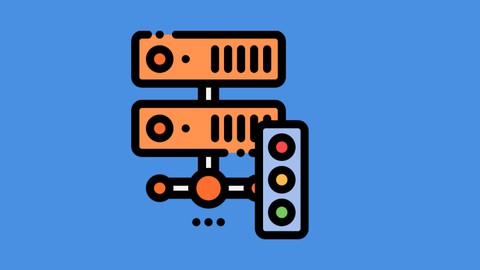
Microsoft SQL Database Server Functions
Microsoft SQL Database Server Functions, available at $19.99, has an average rating of 4.44, with 23 lectures, based on 9 reviews, and has 2061 subscribers.
You will learn about Setup SQL Server Execute CAST Function on SQL Database Server Execute CONVERT Function on SQL Database Server Execute SUBSTRING Function on SQL Database Server Execute RANK Functions on SQL Database Server Execute Aggregate Functions on SQL Database Server This course is ideal for individuals who are Beginners to Database Administration or Beginners to Database Development It is particularly useful for Beginners to Database Administration or Beginners to Database Development.
Enroll now: Microsoft SQL Database Server Functions
Summary
Title: Microsoft SQL Database Server Functions
Price: $19.99
Average Rating: 4.44
Number of Lectures: 23
Number of Published Lectures: 22
Number of Curriculum Items: 23
Number of Published Curriculum Objects: 22
Original Price: $19.99
Quality Status: approved
Status: Live
What You Will Learn
- Setup SQL Server
- Execute CAST Function on SQL Database Server
- Execute CONVERT Function on SQL Database Server
- Execute SUBSTRING Function on SQL Database Server
- Execute RANK Functions on SQL Database Server
- Execute Aggregate Functions on SQL Database Server
Who Should Attend
- Beginners to Database Administration
- Beginners to Database Development
Target Audiences
- Beginners to Database Administration
- Beginners to Database Development
There are various types of functions that can be performed on a Microsoft SQL Database Server. This course will cover a few of them.
Aggregate functions
Aggregate functions perform a calculation on a set of values and return a single value. They are allowed in the select list or the HAVING clause of a SELECT statement. You can use an aggregation in combination with the GROUP BY clause to calculate the aggregation on categories of rows. Use the OVER clause to calculate the aggregation on a specific range of value. The OVER clause cannot follow the GROUPING or GROUPING_ID aggregations.
All aggregate functions are deterministic, which means they always return the same value when they run on the same input values.
Ranking functions
Ranking functions return a ranking value for each row in a partition. Depending on the function that is used, some rows might receive the same value as other rows. Ranking functions are nondeterministic.
CAST function converts an expression from one datatype to another datatype. If the conversion fails, the function will return an error. Otherwise, it will return the converted value.
CONVERT function converts an expression from one datatype to another datatype. If the conversion fails, the function will return an error. Otherwise, it will return the converted value
The SUBSTRING() extracts a substring with a specified length starting from a location in an input string .
Course Curriculum
Chapter 1: Microsoft SQL Database Server Setup
Lecture 1: Introduction
Lecture 2: What is SQL Server
Lecture 3: Download SQL Server
Lecture 4: Install SQL Server
Lecture 5: SQL Server Configuration Manager
Lecture 6: Install SQL Server Management Studio
Lecture 7: Connect to SQL Server with SSMS
Lecture 8: Install Sample Database
Chapter 2: Aggregate Functions
Lecture 1: What are Aggregate Functions
Lecture 2: AVG Function
Lecture 3: SUM Function
Lecture 4: COUNT Function
Lecture 5: MIN Function
Lecture 6: MAX Function
Chapter 3: Ranking Functions
Lecture 1: What are Ranking Functions
Lecture 2: NTILE Functions
Lecture 3: Rank Functions
Lecture 4: DENSE_RANK Functions
Lecture 5: ROW_NUMBER FUNCTIONS
Chapter 4: Miscellaneous Functions
Lecture 1: CAST Function
Lecture 2: CONVERT Function
Lecture 3: SUBSTRING FUNCTION
Instructors
-
Bluelime Learning Solutions
Making Learning Simple
Rating Distribution
- 1 stars: 0 votes
- 2 stars: 1 votes
- 3 stars: 0 votes
- 4 stars: 4 votes
- 5 stars: 4 votes
Frequently Asked Questions
How long do I have access to the course materials?
You can view and review the lecture materials indefinitely, like an on-demand channel.
Can I take my courses with me wherever I go?
Definitely! If you have an internet connection, courses on Udemy are available on any device at any time. If you don’t have an internet connection, some instructors also let their students download course lectures. That’s up to the instructor though, so make sure you get on their good side!
You may also like
- Top 10 Video Editing Courses to Learn in November 2024
- Top 10 Music Production Courses to Learn in November 2024
- Top 10 Animation Courses to Learn in November 2024
- Top 10 Digital Illustration Courses to Learn in November 2024
- Top 10 Renewable Energy Courses to Learn in November 2024
- Top 10 Sustainable Living Courses to Learn in November 2024
- Top 10 Ethical AI Courses to Learn in November 2024
- Top 10 Cybersecurity Fundamentals Courses to Learn in November 2024
- Top 10 Smart Home Technology Courses to Learn in November 2024
- Top 10 Holistic Health Courses to Learn in November 2024
- Top 10 Nutrition And Diet Planning Courses to Learn in November 2024
- Top 10 Yoga Instruction Courses to Learn in November 2024
- Top 10 Stress Management Courses to Learn in November 2024
- Top 10 Mindfulness Meditation Courses to Learn in November 2024
- Top 10 Life Coaching Courses to Learn in November 2024
- Top 10 Career Development Courses to Learn in November 2024
- Top 10 Relationship Building Courses to Learn in November 2024
- Top 10 Parenting Skills Courses to Learn in November 2024
- Top 10 Home Improvement Courses to Learn in November 2024
- Top 10 Gardening Courses to Learn in November 2024





















